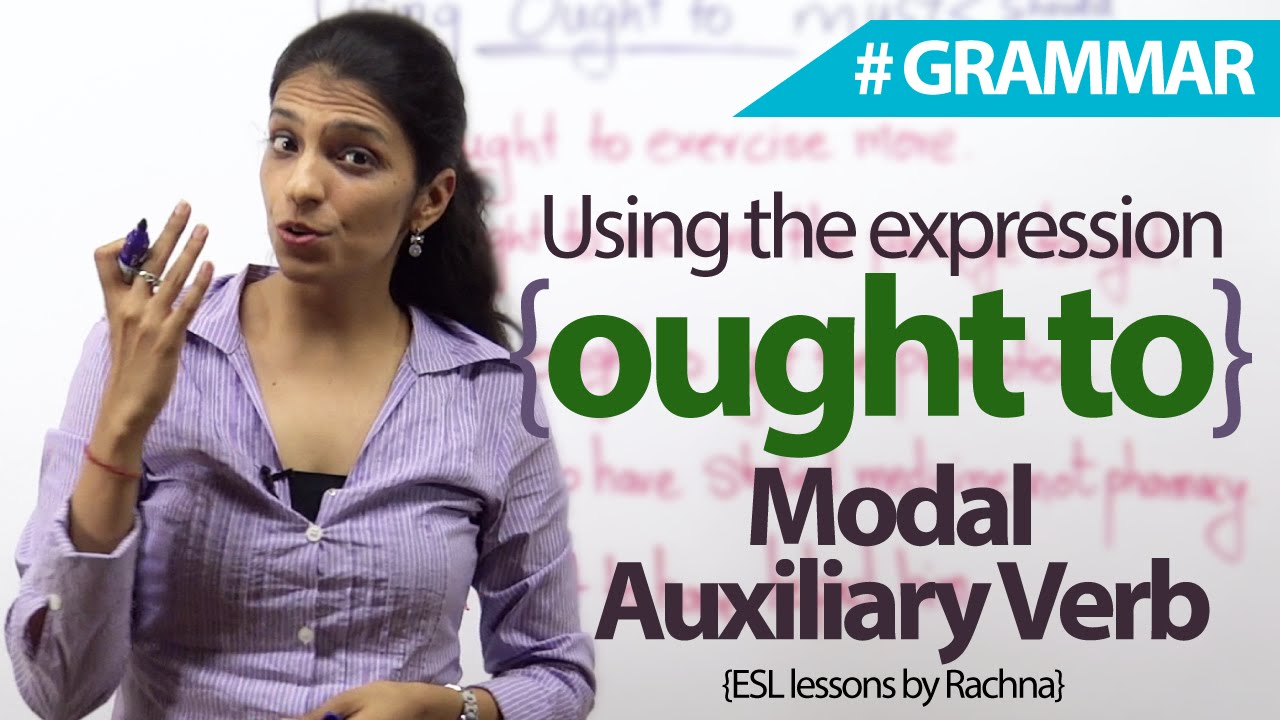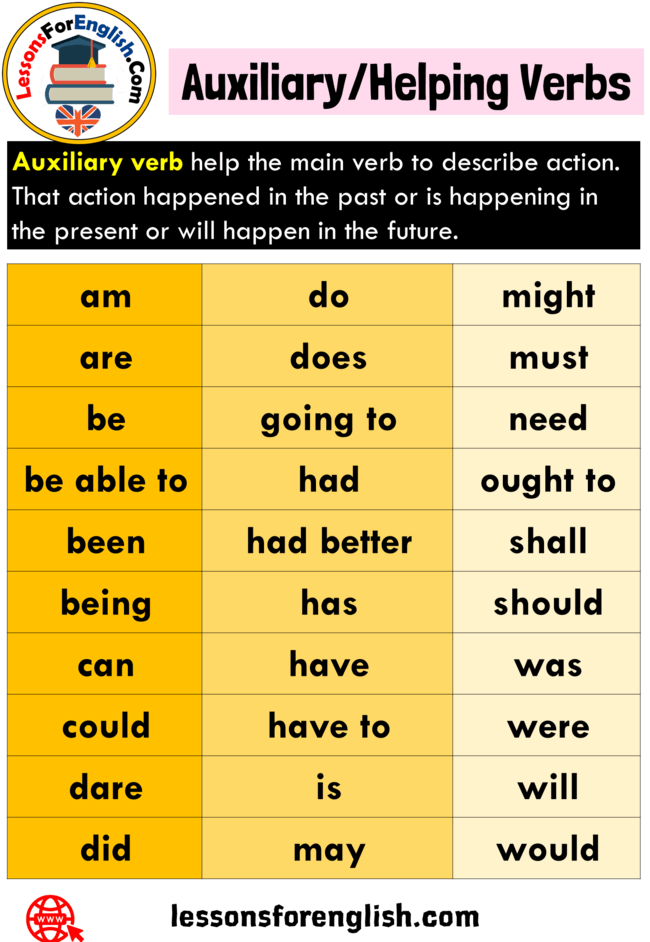


In quite a few works, however, the term is applied to a much wider range of grammatical and/or lexical phenomena including expressions serving derivative, pro-verb-like, adpositional and other purposes.and, in fact, up to now there does not appear to be any typologically meaningful way of delimiting the range of conceptual, morphosyntactic or other properties that an auxiliary, or a "canonical auxiliary" for that matter, should exhibit." (Heine 1993:5) "For a number of authors, including the present one, the use of the term auxiliary is primarily associated with a limited range of notional domains, most of all with the domains of tense, aspect, and modality.
#Auxiliary verb adalah trial
Upload a free trial document today and find out more about how proofreading could help you grow as a writer.An auxiliary (verb) is a verb-like function word that combines with a main verb and typically helps to express various concepts of tense, aspect or mood, but may also be used for other functions such as valence-changing operations, negation, or various notions that are expressed by adverbs in other languages. If you need to be sure you’ve used the right verbs in the right places, our grammar experts can help. The key is picking the right modal verb for the situation! Proofreading for Grammar Sometimes, modal verbs can also be used before another helping verb in a verb phrase, such as in the following sentences: In this case, adding “can” before “jump” shows that we’re discussing the person’s ability to jump. The main modal verbs in English are “can,” “could,” “may,” “might,” “must,” “shall,” “should,” “will,” and “would.” Like the other auxiliary verbs above, modal verbs go before a main verb in a sentence. We use these to express things like ability, possibility, and permission.

There is another class of “helping” verb we haven’t discussed: modal verbs. It is only when used alongside another verb they count as auxiliary verbs. This means they can be used to form a complete sentence by themselves. “Be,” “have,” and “do” can all work as main verbs, too. Most negations in English take this form, so “do” is an important little word! Be, Have and Do as Main Verbs We also use it alongside another verb in negations (usually with “not”): Thank you for subscribing to our newsletter! We can use “do” as a helping verb to make an emphatic statement: Helping verbs can therefore help us to create an objective tone in writing. We can use a form of “be” with a past participle to form the passive voice: In these cases, then, auxiliary verbs “help” us to form different tenses. In the progressive tenses, we use a form of “be” with a present participle:
#Auxiliary verb adalah plus
For the perfect tenses, we use a form of “have” plus a past participle:

Sometimes, we need an auxiliary verb to express a sentence in a specific tense. These auxiliary verbs can help us to form tenses, switch to the passive voice, form negations, or add emphasis. You can see examples of these helpful verbs below in blue, along with the main verb in each sentence in green: The three main auxiliary verbs in English are “be,” “have,” and “do” in their various forms. Auxiliary Verbs: Be, Have, DoĪuxiliary verbs are known as “helping verbs” because they “help” other verbs: i.e., we use them alongside other verbs to form certain types of sentence. In this post, we explain the basics of how auxiliary verbs work. But what are they? Why are they also known as “helping” verbs? And when should you use them in your writing? Most English speakers use auxiliary verbs every day, even if they’ve never heard the term “auxiliary verb” before.


 0 kommentar(er)
0 kommentar(er)
